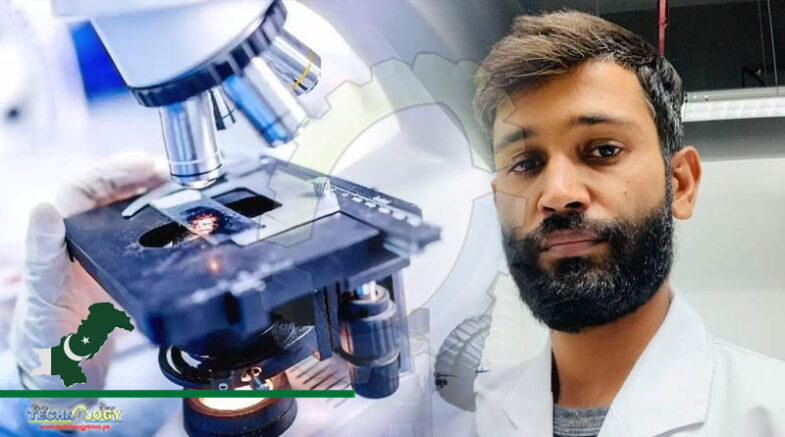Pakistani Scientists Develop Eco-friendly Fluorescent Nanoparticles Using Teabags

Karachi: A team of Pakistani Scientists developed fluorescent nanoparticles from used tea through an eco-friendly procedure. These nano particles might function as sensors in various medical applications.
Aumber Abbas: a PhD scholar at Newcastle University, UK and others from Oxford University, UK, have invented tea bags. The team worked on the used teabags by converting them into Graphene Quantum Dots (GQDs). They designed a highly selective sensor to detect iron in drinking water and Parkinson’s patients.
In addition, Graphene, an allotrope of carbon discovered in 2004, made with tiny particles. Graphene is a mixture of a sheet of carbon atoms that you can easily collect from a piece of graphite using scotch tape.
Besides, the Nobel prize was for discovering this magical substance. Hence, Graphene is a perfect material for new research in medicine, material science and other disciplines.
On the other hand, researchers and scientists worldwide are constantly busy fine-tuning Graphene for desirable results. For instance, in March 2018, Pablo Jarillo-Herrero at the Massachusetts Institute of Technology (MIT) discovered that when a one-atom-thick sheet of Graphene is placed on another with a slight twist, the material shows superconductivity.
Likewise, the same goes with flourscenes in GQDs gave the team a clue to do some more tweaks.
Though, the team intended to glow the particles, there is no energy or bandgap in Graphene. However, Abbas and his team successfully attempted a different approach to this issue.
Amber Abbas told the news, ‘One of the challenges with Graphene is zero bandgaps that limit its optical emission and applications in flourscenes field. To this end, I tried to solve this challenge by cutting the Graphene sheet into small pieces and introducing a band gap. As a result, small pieces of Graphene started fluorescing’.
In addition, he also said that our main aim was to develop budget-friendly advanced material. Therefore, we started using a waste black tea bag.
Recipe of Graphene Quantum Dots
The recipe behind the whole process was to first convert the black tea waste into black char by heat treatment at 500°C. The resulting char was further through the high-pressure off vessel at 200-250°C in the presence of Oxone chemical. Later, the mixture is used to filter and remove the tiny particles of Graphene after the reaction.
The nanosized Graphene sheets in the filtrate liquid began to fluoresce. The dots now can emit fluorescences, indicating that a bandgap has formed in the material. As a result, the team was able to transform the GQDs into an effective sensing material.
In the next step, researchers worked on nanodot structure, size, quality and other characteristics by using High Transmission Electron Microscopy.
The Blue Light
The entire process of the experiment shows that a single dot is 1 to 5 nanometres in size with a thickness of one nanometre.
Hence, the GQDs can detect the presence of iron or its states based on their strong luminescent blue color and turn it into a sensor later.
As we know, the abnormal iron buildup in the brain increases cognitive decline and may lead to Alzheimer’s disease.
On the other hand, iron accumulation is also harmful to the environmental system and water.
Furthermore, the particles are in green, acid-free, cost-effective method with raw material which is abundant-the used tea.
Read more:
- 13 Pakistanis Are Included In World’s Top 2% Scientists
- Stanford University Declared 144 Pakistanis Among World’s Top Scientists
Sharing clear, practical insights on tech, lifestyle, and business. Always curious and eager to connect with readers.


 3 min read
3 min read

















